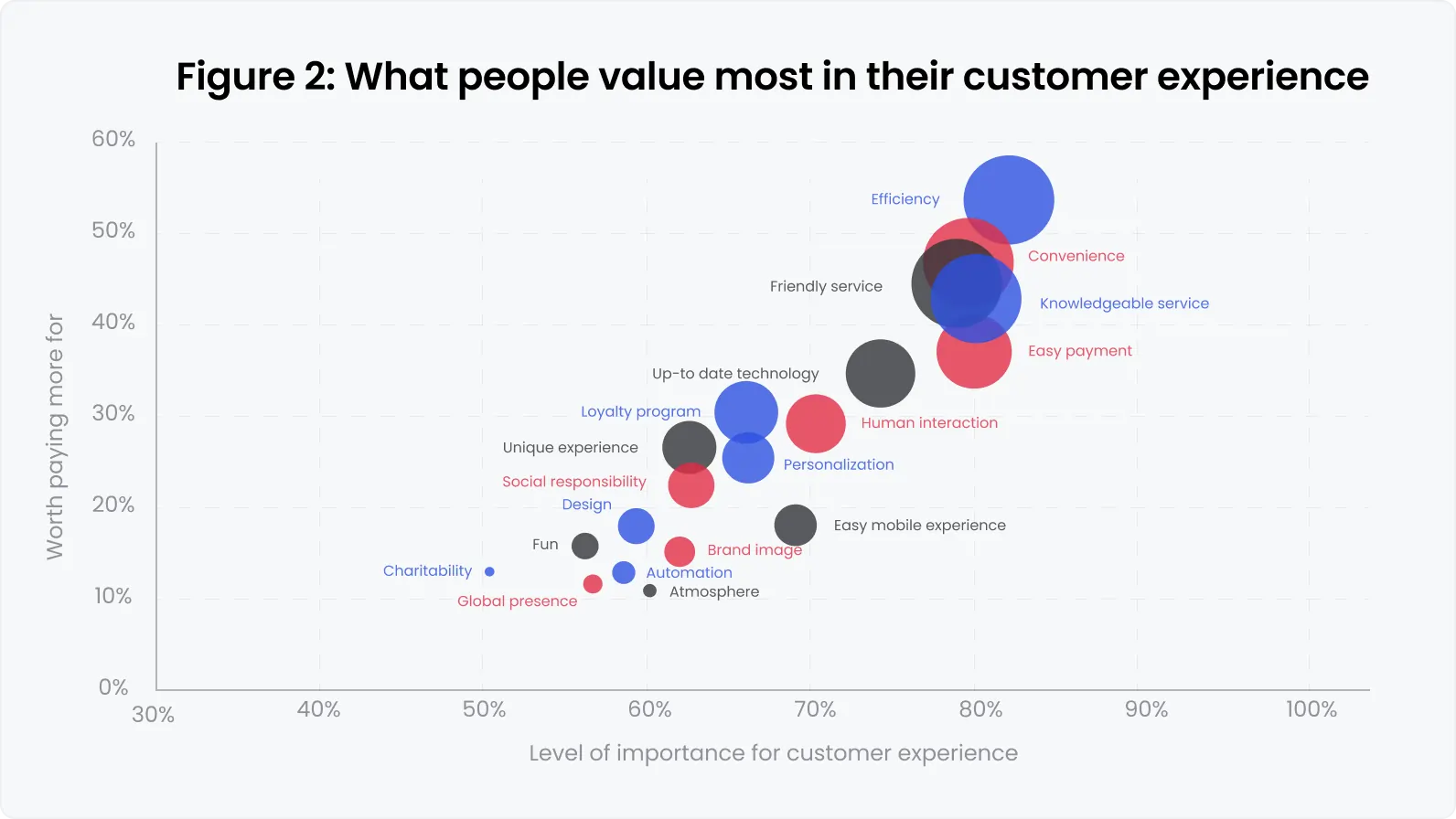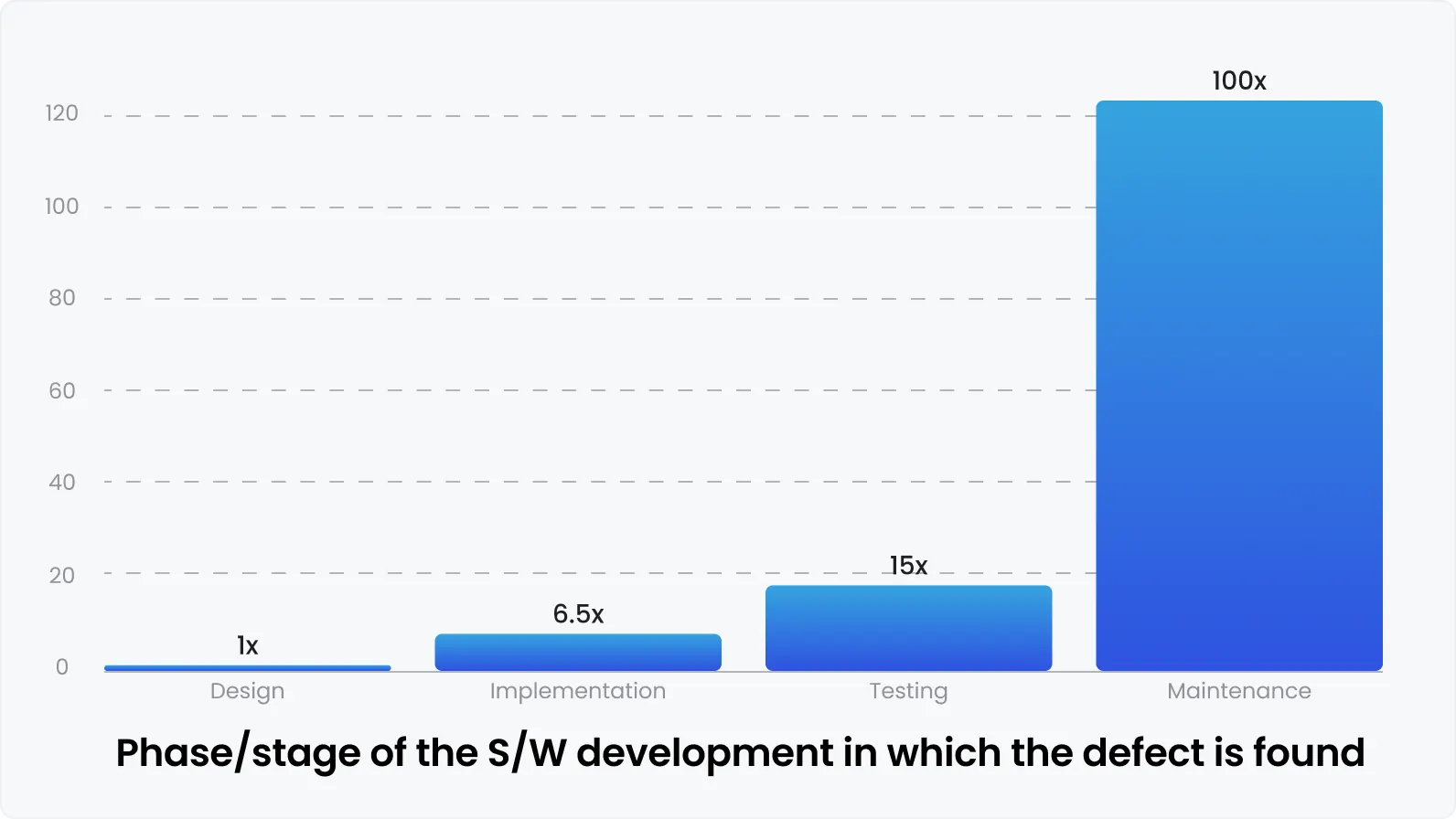16 minutes to read
Why QAOps is the missing piece in your DevOps strategy


Mykhailo Ralduhin
Senior QA Engineer
"DevOps makes tech people put quality into the top 1 priority." Jez Humble, co-author of The DevOps Handbook, knows the ropes. Many businesses face a critical challenge today: accelerating their development processes without compromising on quality. DevOps has transformed software delivery, it emphasized speed and built true collaboration. However, integrating a strong quality assurance is often overlooked — this is how companies risk losing everything.
This is where QAOps comes into play. QAOps integration into the DevOps pipeline ensures consistent quality maintenance at every stage of the development lifecycle. Unlike traditional QA, which often functions separately from development, QAOps bridges the testing team with development.
A permanent focus on software quality may not solve all the problems. However, a USD 2.41 trillion loss due to poor software quality seems a colossal amount to pay QA special attention to.
Further, we’ll explore why QAOps is the missing piece in your DevOps strategy, consider the benefits of integrating QAOps, examine the challenges you might encounter, and outline best practices for successful implementation.
Fast releases with confidence. Powered by QAOps
What is QAOps?
You can’t build a skyscraper without a solid foundation. You may construct it very fast, but the entire structure may collapse in the blink of an eye. The same story in software development. Software quality assurance is the foundation of your product.
QAOps (Quality Assurance Operations) is the practice of embedding quality assurance directly into the DevOps pipeline. This way, the software is not only developed quickly but also with the highest quality standards at every step — this is an important note.
Unlike traditional QA, which often operates in isolation and kicks in after the development process, QAOps integrates QA into every phase of the software development lifecycle. Standard practice may not fit as it causes delays if issues are found. Quality assurance in DevOps promotes continuous integration, continuous testing, and collaboration among all team members — developers, testers, and operation staff.
QA automation
Software testing providers utilize test automation tools to continuously check for defects as code is developed. This, in turn, helps to catch issues early when they are easier and less costly to fix. Continuous testing ensures that every change made to the codebase is immediately verified, reducing the risk of bugs slipping into production. Another cornerstone of QAOps collaboration between QA and DevOps teams as it creates a culture where quality is a shared responsibility.
Here’s the killer benefit: QAOps improves the quality of your software and, which is more important, accelerates innovation. QAOps integration allows you to move faster, deploy more frequently, and focus on strategic moves rather than fixing old bugs.
The need for QAOps in DevOps
DevOps bridges development and operations teams, speeding up delivery cycles. Yet, even with this advancement, many organizations still face significant challenges. Without an integrated quality assurance approach like QAOps, these challenges can lead to severe consequences.
Common issues in DevOps without QAOps
Deployment delays: When quality assurance is treated as a separate phase, testing is near the bottleneck. Have you ever found yourself a last-minute bug fixing and delaying releases? Not the best feeling, innit? Users also think this way.
Undetected bugs: They can slip through the cracks and only be discovered post-deployment. This will result in costly hotfixes, reduce user satisfaction, and even damage brand reputation. Recall the Knight Capital Group case from far 2012. A major stock market player deployed faulty trading software without adequate testing. Within 30 to 45 minutes of deployment, the software caused a USD 440 million loss, forcing the company to sell off its assets to survive.
Siloed teams: Many companies set QA teams to operate separately from development and operations, which leads to poor communication, misunderstandings, and misaligned objectives. This separation significantly delays and leads to errors as teams work on different assumptions and timelines.
How QAOps addresses these issues
Seamless quality assurance integration into the DevOps pipeline. Like the thread that weaves through every stage of development, ensuring that the fabric of your software remains strong and intact.
Continuous testing mitigates deployment delays. Automated tests run alongside code development, catching issues before they become costly problems. This approach ensures that bugs are fixed in real-time rather than at the last minute, keeping the deployment schedule on track.
Undetected bugs become detected bugs. One more time, due to quality checks in every phase of the CI/CD process, you can rest assured the software only can look up and not become worse. Let this “mechanic” (QA pro) check “an engine” (software at every stage) at various points during an overhaul — this way, QAOps continuously inspects the software as it’s being built.
QAOps breaks down the walls between teams. In a QAOps framework, QA is not a separate entity, but a core component of the DevOps process. This alignment ensures that everyone – from developers to testers to operations – works together towards the common goal of delivering high-quality software, faster.
QAOps integration: 8 benefits
You could do with adding QAOps in your DevOps strategy. If you are looking to enhance your software development process, consider this move. Consider the key advantages below as proof of the pudding.
1. Improved collaboration between teams
Speaking about teamwork, it’s obvious: without proper collaboration, any endeavor is doomed to failure. It’s especially noticeable in sports.
So, when QA, development, and operations teams collaborate seamlessly, the entire software development lifecycle becomes more efficient. A Google two-year study found that high-performing teams with strong collaboration are 49% more likely to exceed their goals.
For this reason, QAOps ensures such collaboration by integrating QA practices directly into the DevOps pipeline. This way, all teams are aligned and working towards a common objective.
2. Faster (and reliable) releases
When autotests run continuously, devs get faster and more reliable releases. This leads us to the (anti)insight — run automated tests in parallel with development as this way, you’ll catch bugs early and reduce the time spent on manual testing.
At the end of the day, we all want our products delivered faster without sacrificing quality. Forrester knows that like nobody’s business: Companies that adopt continuous testing as part of their DevOps strategy reduce their release times by up to 25%.
3. Enhanced software quality and user satisfaction
PWC found that 80% of American users are willing to pay more for a better customer experience, which includes software performance and reliability. Integrating QAOps ensures quality checks are embedded throughout the development process.

Focus on quality: QAOps places quality over quantity and speed from the beginning. Many testing pros practice test-driven development (TDD) and behavior-driven development (BDD) for this purpose.
Early defect detection: By shifting testing left (to the early stages of the development lifecycle), QAOps allows teams to identify and fix defects early in the development lifecycle. This helps to ensure that software meets the users’ needs.
Improved user experience: As we have already emphasized, high-quality software is more reliable, usable, and secure. And who will be against a better user experience and increased user satisfaction?
4. Reduced costs and bux-fixing time
When you identify software issues early in the development cycle, you automatically reduce pending bug-fixing costs.

If you google “cost of bugs in the implementation phase” you may come across articles claiming bug-fixing costs are at least 100 times higher. Such articles refer to the Systems Sciences Institute at IBM study which doesn’t exist though. However, speaking from experience, postponed fixing costs are significantly higher if we include users who gave up your software due to inconveniences or glitches.
5. Better visibility and traceability of issues
QAOps improves visibility and traceability across the entire development lifecycle. With continuous integration of QA processes, teams can easily track where issues originate and how they evolve over time. This transparency helps in identifying recurring problems and addressing them proactively, leading to more stable and reliable software.
6. Increased developer productivity
Obviously, developers spend less time fixing bugs and spend more time thinking over “bettering” the software. Continuous testing and automation take care of routine checks, allowing developers to zero in on writing quality code. Consequently, this improves productivity and boosts morale, as developers can see their work progressing smoothly through the pipeline.
7. Data-driven decision making
Fast feedback during the cycle allows you to adjust your measures accordingly.
Metrics and analytics: QAOps provides teams with a wealth of metrics and analytics that can be used to track the quality of their software and identify areas for improvement.
A/B testing: QAOps facilitates A/B testing, which allows teams to experiment with different features and functionality.
Continuous improvement: When you have relevant data and the first results of your software performance (even during tests), it’s much easier to improve the software development process.
8. Proactive risk management
QAOps allows for proactive risk management by embedding risk assessment into every stage of the development process. Continuous monitoring and testing help teams identify potential risks early and address them before they become major issues. This approach reduces downtime and improves overall system reliability.
Six challenges and solutions in implementing QAOps
1. Cultural resistance
Challenge:
Resistance to change is the most common barrier to any improvement, including QAOps adoption. This is not a matter of good or bad/lazy employees. Rather, it’s a matter of fear — fear of increased workload, job security concerns, or simply a reluctance to change established workflows (“What if the new one doesn’t work?”). So we encounter passive pushback, where teams are slow to adopt new practices, or active opposition, where employees openly challenge the new methods.
Solution:
Communication
Clearly demonstrable benefits
Active involvement with a genuine leadership example
Start by implementing pilot projects that fully embrace QAOps practices within a small, manageable scope. For instance, choose a non-critical project where you can demonstrate the benefits of integrated QAOps, such as faster delivery times and reduced bugs.
Once you have first success as evidence, showcase these results to the wider team, making a point on how QAOps reduces rework and minimizes firefighting during releases. Additionally, involve team leaders early in the transition process.
2. Tooling complexity
Challenge:
When you go all in for a QAOps endeavor, you may lose your bearings among a vast array of tools for QA automation, continuous integration, and monitoring. With so many options, teams can quickly become overwhelmed, which, in turn, may lead to hesitations or the adoption of tools that do not integrate well with existing workflows. This complexity can slow down implementation and lead to fragmented processes that fail to deliver the full benefits of QAOps.
Solution:
Focus on selecting best-of-breed tools that are widely adopted, well-supported, and easily integrated into your existing tech stack.
Jenkins is a robust choice for CI/CD due to its extensive plugin ecosystem and widespread use.
Selenium is ideal for test automation because of its flexibility and support for multiple programming languages.
Docker is for containerization and ensures consistency across environments, reducing the variability that can lead to unreliable test results.
Prioritize tools that have strong community support, it will be helpful to hit someone up on any issues in your QAOps pipeline. Start by integrating these tools into a specific segment of your pipeline to reduce the risk of disruption and expand gradually.
3. Skill gaps
Challenge:
QAOps requires complex skills from both the QA and DevOps domains, including soft skills. Not all team members may possess the necessary knacks to work within a QAOps framework, and one day you may find yourself with an unsatisfied team and an ineffective process. And the learning curve for mastering new tools and methodologies can be steep, further complicating the adoption of QAOps.
Solution:
Addressing skill gaps involves a commitment to continuous learning and targeted training. Begin by assessing the current skill levels within your team to identify specific areas that need improvement.
Offer targeted training programs focused on the key aspects of QAOps, such as automation scripting, CI/CD pipeline management, and container orchestration. Consider Coursera or Udemy, which offer specialized courses in these areas, or organize in-house workshops led by experts in the field.
Put in knowledge-sharing sessions where team members can discuss challenges and solutions. This way, you strike two birds with one stone: foster a collaborative learning environment and grow internal leaders. Pair less experienced team members with mentors who can guide them through the complexities of QAOps, ensuring that the entire team advances together.
4. False union
Challenge:
Sometimes, even DevOps-oriented companies have siloed teams. QA, development, and operations teams may continue to work independently, leading to miscommunication, duplicated efforts, and delays in addressing issues. Collaboration in DevOps is not only a matter of tools like what to use Slack or Git. Here, we have a cultural aspect of the communication problem.
Solution:
The first step is cross-functional teams where QA, development, and operations staff work together from the start of the project.
The second is regular communication: schedule daily stand-ups, retrospectives at the end of each sprint, and joint planning sessions that include all stakeholders.
We said this is not a matter of tools. Yet, you shouldn’t forget them at all. Slack or Microsoft Teams are the rule of thumb for maintaining continuous communication. And make sure to adopt a shift-left approach — just involve the QA team at the earliest stages of development.
5. Infrastructure challenges
Challenge:
One of the most technical challenges in QAOps is ensuring that test environments are consistent and mirror production environments. Discrepancies between these environments can lead to unreliable test results, where code that passes in testing fails in production. This is particularly problematic in complex systems with multiple dependencies, where even minor differences can cause significant issues.
Solution:
Infrastructure as Code (IaC) automates the provisioning and testing environment management. Terraform and Ansible allow you to define your infrastructure in code, ensuring that environments are consistent, reproducible, and aligned with production. We will take a closer look at IaC further, but the most important takeaway is that you can reduce the risk of environment-related issues.
6. Integration issues
Challenge:
Integrating QAOps tools into the existing CI/CD pipeline can be technically challenging if your current setup lacks flexibility or uses legacy systems. Eventually — delays, increased complexity, and even potential conflicts between tools can disrupt the development process.
Solution:
The strategy of incremental adoption. Instead of overhauling your entire pipeline at once, start by integrating QAOps tools into the most critical areas, such as continuous testing and automated deployments.
Not a rule of thumb, yet a workable suggestion — begin with integrating a tool like Jenkins for CI/CD and gradually add tools for test automation and monitoring as the team becomes more comfortable with the new processes. This step-by-step approach reduces the risk of disruption and allows for smoother transitions.
Best practices for QAOps implementation
Start small and scale gradually
Instead of simply starting with non-critical projects, strategically select pilot projects that have the potential to showcase the full impact of QAOps. Choose projects that are complex enough to demonstrate the value of continuous testing and automation, but not so critical that failure would be catastrophic.
Additionally, ensure that the team working on the pilot is diverse in skills and experience so that they can bring varied perspectives to the table.
Promote a culture of continuous improvement
Implement regular cross-team workshops where QA, DevOps, and development teams can share insights, challenges, and successes. The ABC practice is blameless post-mortems after significant issues.
Important: you should focus on process improvements rather than individual mistakes. Other improvements:
Quality-centric mindset: You should convey that quality is paramount. Embed quality principles into the teams' DNA, making it an integral part of the decision-making process.
Empowerment and autonomy: Grant QA teams (as well as others) the autonomy to make decisions and drive improvements.
Continuous learning: Learning culture is a must in any organization, team, or endeavor. So are DevOps best practices. Mentorship programs and knowledge-sharing initiatives could potentially help you to instill such a culture.
Also, consider implementing pair testing sessions, in which developers and testers work together on the same piece of code, blending their perspectives for more comprehensive testing.
Use automation tools and CI/CD pipelines
If you want to become a true leader in QAOps, consider these advanced practices.
Test environment orchestration: Leverage self-service provisioning — hand over all complexities to the cloud provider. Also, dynamic configuration and environment tear-down will help you save time and overcome potential issues.
AI and machine learning: Generate test cases, use predictive analytics, and optimize tests with ML algorithms. A tip: it’s not necessary to build your own model, you can use the ready one from GitHub if it suits your needs.
Chaos engineering: Intentionally inject faults into a system to test its resilience. This way, you can identify potential failure points and correct them before they cause an actual outage or other disruption. A tip: make sure to have a plan before adding some mess to your workflow.
Quality gates: Set up stringent quality gates throughout the software delivery pipeline. This allows you to prevent defects from progressing to later stages.
Measure performance with relevant metrics
It’s easy as cake to choose the wrong metrics, some teams even do it intentionally to ease off the pressure from management and ensure a raise at the end of the year. In addition to basic metrics like test coverage, include pipeline efficiency metrics: cycle time (the total time from commit to deployment) and test flakiness rates (how often tests fail without a code change).
High flakiness rates, for example, may indicate unstable tests that need refinement. Customer-reported bug ratios can be particularly insightful — tracking the number of bugs reported by users compared to those found internally can highlight gaps in your testing processes.
Automate infrastructure management with IaC
Infrastructure as Code (IaC) implies using Terraform or Ansible, or similar tools to provision environments. Yet, it goes beyond this simple function. Use IaC to create immutable infrastructure — once a server or environment is deployed, it is never modified. Instead, if you need to change it, rebuild the infrastructure from scratch with the new configuration. This approach ensures that environments are always in a known, consistent state.
Use feature flags for safe deployments
Feature flags aren’t just for enabling or disabling features, they can also be used for canary releases or A/B testing. With LaunchDarkly, for example, you can deploy new features to a small subset of users, monitor their performance, and gather feedback before rolling them out to the entire user base.
To sum up
Integrating quality assurance in DevOps empowers organizations to deliver high-quality software quickly. Through automation, collaboration, and continuous improvement, QAOps transforms the software development lifecycle. This inevitably leads to enhanced product quality, accelerated time-to-market, and reduced costs.
By embedding QA into the DevOps pipeline, you can achieve a more streamlined and resilient development process, ultimately delivering higher-quality products to your users.
DeviQA specializes in software quality assurance and can help you implement a robust QAOps framework tailored to your specific needs. Contact us today for a free 1-hour consultation or to learn more about our comprehensive QA and testing services.
Team up with an award-winning software QA and testing company
Trusted by 300+ clients worldwide
What is QAOps?
The need for QAOps in DevOps
QAOps integration: 8 benefits
Six challenges and solutions in implementing QAOps
Best practices for QAOps implementation
To sum up



